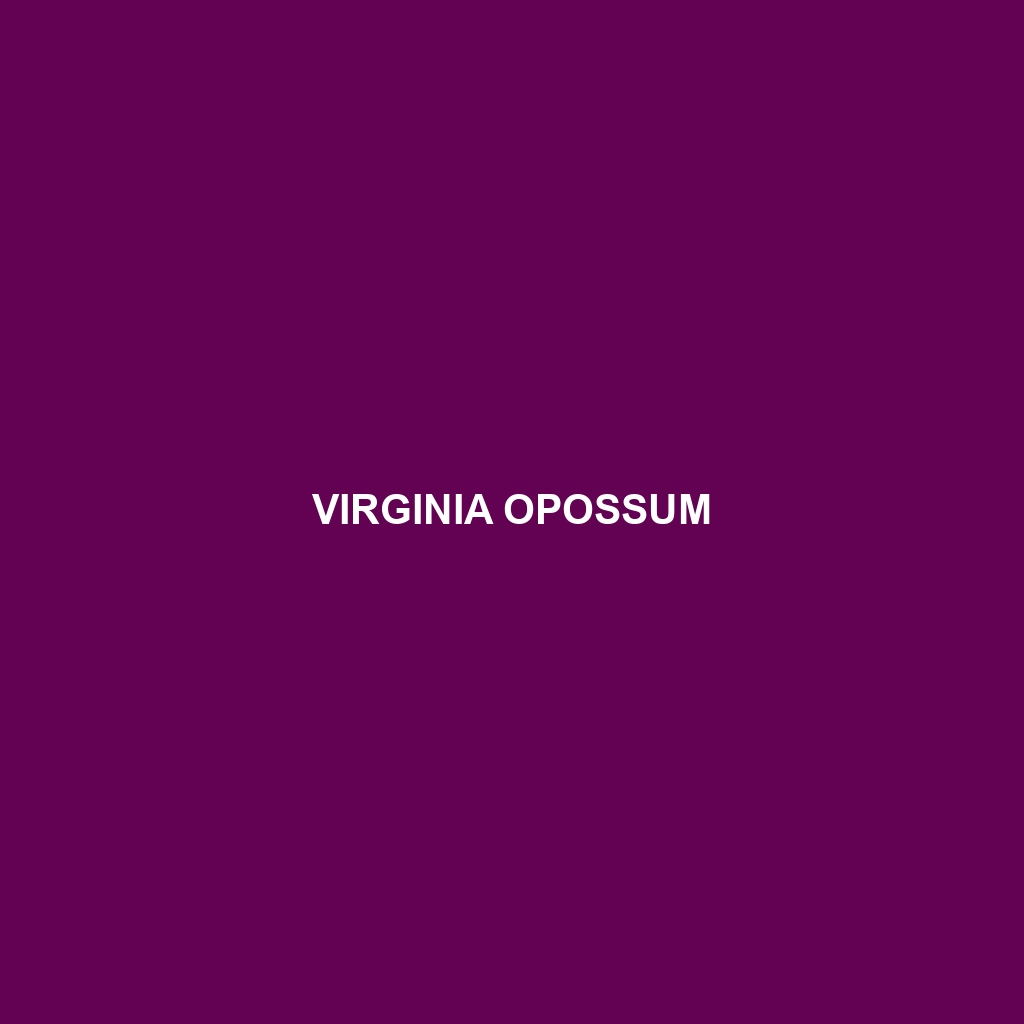Virginia Opossum (Didelphis virginiana)
The Virginia Opossum, also known simply as the opossum, is North America’s only marsupial. Renowned for its adaptability and unique behaviors, this nocturnal mammal is a fascinating creature that plays a vital role in its ecosystem.
Physical Characteristics
Size: Adult Virginia opossums typically measure 13 to 37 inches in length, excluding their tails, which add another 8 to 19 inches. They generally weigh between 4 and 14 pounds, with males being larger than females.
Coloration: Their fur is usually a mix of grey, white, and black, providing a somewhat scruffy appearance. The face is typically white with a long snout and black eyes. Their ears are hairless and black, while their tail is partially furred at the base and scaly towards the end.
Special Features: Opossums are known for their prehensile tails, which they use for balance and grasping branches. They also possess opposable thumbs on their hind feet, aiding in climbing. A notable feature is their 50 sharp teeth, more than any other North American mammal.
Behaviors
Social Interactions: Virginia opossums are solitary animals, except during mating season or when a mother is raising her young. They are not territorial and tend to avoid confrontation, often resorting to “playing possum” — feigning death — as a defense mechanism.
Feeding Habits: Omnivorous and opportunistic feeders, their diet includes fruits, insects, small mammals, birds, eggs, and carrion. They also scavenge human garbage and pet food, making them frequent visitors in urban areas.
Ecological Roles: Opossums help control insect and rodent populations and also act as scavengers, cleaning up carrion. They are important seed dispersers, contributing to plant propagation.
Habitats
Range: The Virginia opossum is found throughout North America, from Central America through the United States and into southern Canada. They thrive in diverse environments, including woodlands, farmlands, and urban areas.
Shelter: They take refuge in hollow trees, abandoned burrows, brush piles, and even human-made structures like attics and garages. They are highly adaptable to different shelter options available in their environment.
Adaptations
Marsupial Reproduction: Females have a pouch where they carry and nurse their underdeveloped young after birth. This adaptation allows the young to continue developing in a protected environment.
Immune System: Opossums have a high resistance to snake venom and a lower susceptibility to rabies compared to other mammals, which helps them survive in their diverse habitats.
Temperature Regulation: Lacking significant body fat and fur on their ears and tails, opossums are not well-suited for extremely cold climates, which limits their northern range.
Conservation Status
The Virginia opossum is currently not considered endangered or threatened. They are classified as Least Concern by the IUCN due to their wide range, high adaptability, and stable population numbers. However, they face threats from vehicle collisions and habitat destruction.
Fun Facts
“Playing Possum”: This defense mechanism involves the opossum going limp, drooling, and emitting a foul odor to mimic a dead and rotting animal, deterring predators.
Grooming: They are meticulous groomers, using their claws and mouth to clean their fur, which helps in parasite control.
Nocturnal Lifestyle: Opossums are nocturnal and have excellent night vision due to their large eyes, aiding in their nighttime foraging activities.
By understanding the Virginia opossum’s fascinating attributes, behaviors, and ecological importance, we can appreciate the unique role this adaptable marsupial plays in the natural world.
